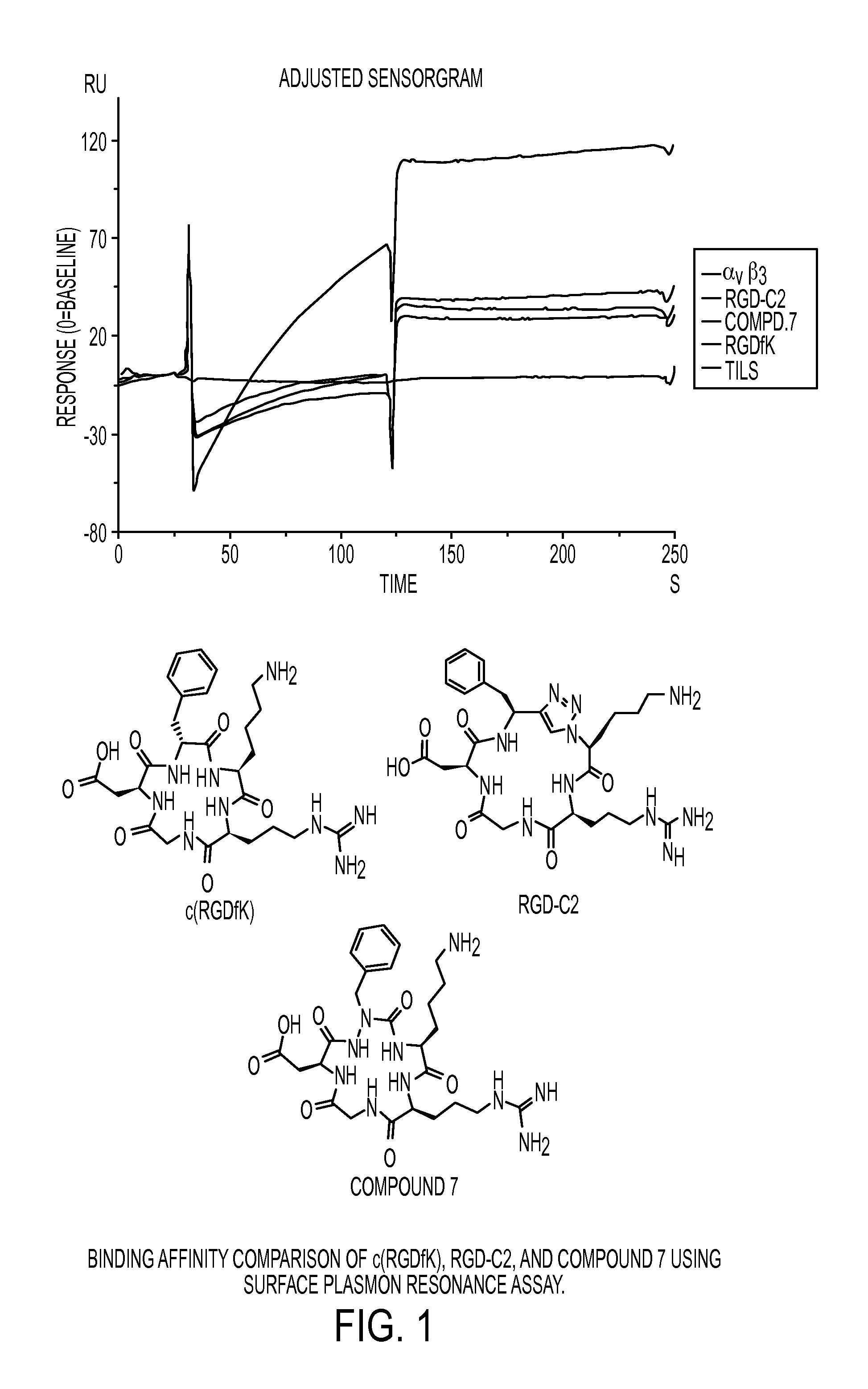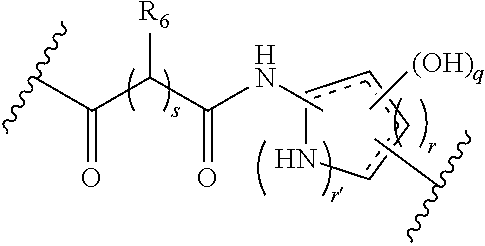Cyclic Azapeptides as Integrin Markers and Methods of Using
a technology of cycloazapeptides and integrin markers, which is applied in the field of radiolabeled cyclic polyazapeptides, can solve the problems of difficult lesion visualization in the abdominal region, severely limits the exploration of improved derivatives, and the use of cycloazapeptides (or cyclic) as standard clinical biomarkers, and achieves low signal-to-noise ratio, rapid synthesis and testing, and high binding affinity
- Summary
- Abstract
- Description
- Claims
- Application Information
AI Technical Summary
Benefits of technology
Problems solved by technology
Method used
Image
Examples
examples
[0120]The novel cycloazapeptide compounds disclosed in this application are prepared using click chemistry [9-17]. Click chemistry, as used in this application, describes the rapid, selective and specific formation of 1,4- or 1,5-disubstituted 1,2,3-triazoles starting from alkyl azides and terminal alkynes. One or more triazole moieties are attached to the cyclic peptide, the hydrophilic linker, or the radiolabel tag. Click chemistry is a high-yielding and modular approach and as such, the pharmacokinetic properties of these cycloazapeptide analogs are easily modified.
[0121]Scheme I provides an exemplary reaction scheme for the synthesis of a cycloazapeptide containing Arg-Gly-Asp (RGD) fragment.
Synthesis of Compound 7
[0122]Synthesis of (9H-fluoren-9-yl)methyl hydrazinecarboxylate (Compound 1): To a round bottom flask containing hydrazine (9.3 g, 0.291 mol) in diethyl ether (anhydrous, 200 mL) at ice bath temperature, was added 9-fluorenylmethyl chloroformate (25 g, 97 mmol) in diet...
PUM
| Property | Measurement | Unit |
|---|---|---|
| nuclear imaging | aaaaa | aaaaa |
| positron emission tomography | aaaaa | aaaaa |
| PET | aaaaa | aaaaa |
Abstract
Description
Claims
Application Information
 Login to View More
Login to View More - R&D
- Intellectual Property
- Life Sciences
- Materials
- Tech Scout
- Unparalleled Data Quality
- Higher Quality Content
- 60% Fewer Hallucinations
Browse by: Latest US Patents, China's latest patents, Technical Efficacy Thesaurus, Application Domain, Technology Topic, Popular Technical Reports.
© 2025 PatSnap. All rights reserved.Legal|Privacy policy|Modern Slavery Act Transparency Statement|Sitemap|About US| Contact US: help@patsnap.com



